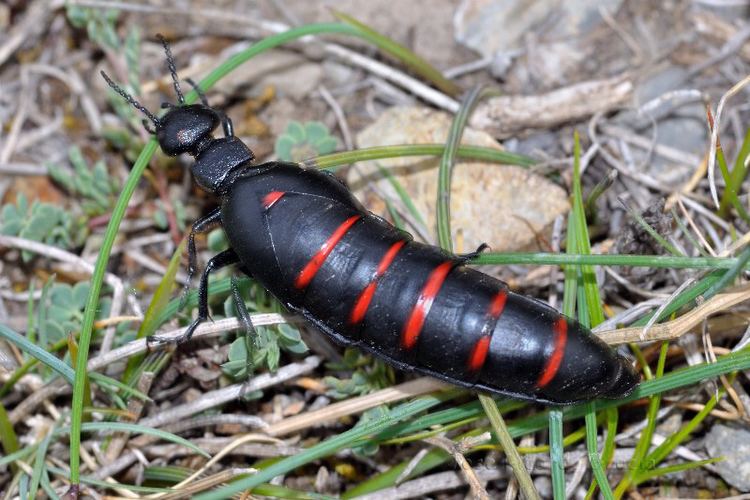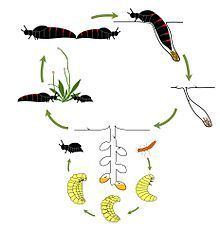Family Meloidae Rank Species | Order Coleoptera Tribe Lyttini | |
 | ||
Similar Mylabris quadripunctata, Anthaxia hungarica, Anthrenus pimpinellae, Trichodes leucopsideus, Physomeloe corallifer | ||
Spanish oil beetles berberomeloe majalis b insignis
The red-striped oil beetle, Berberomeloe majalis is an insect in the genus Berberomeloe , found in Europe, with a typical length around 5 cm (2 in.). Its large size and the bright red bands around its body make it unmistakable; its colouration is aposematic, reflecting its ability, in common with other oil or blister beetles in the family Meloidae, to squirt a caustic liquid if attacked.

The red-striped oil beetle is found in dry places in the mediterranean regions of Spain, Portugal, and also in North Africa, from Morocco to Tunisia. They live in sunny, dry places, either in open grassland in woodland with light tree cover. They can be found from sea level to altitudes as high as 3000 m in the Sierra Nevada.

The imago lives on pollen. The larvae are exclusively parasitic, mainly living in the nests of solitary wild bees. The female lays between 2000 and 10000 eggs, but most of these fail to reach maturity either for lack of food or through predation. In contrast with the adult, the larvae are only about 3mm long, and their development proceeds through hypermetamorphosis. The various larval stages are therefore of different forms. Unlike the larvae of beetles of the genus Meloe, the first stage larva does not cling on to a potential host, but has to actively seek a host out. Once the larva has consumed the egg and stored nectar and pollen from a bee's nest, they leave it. They then moult again, and emerge with their back legs formed. From this stage they pupate, and emerge from the chrysalis as adults. If a larva accidentally selects a honey bee as host, it dies in the hive.


